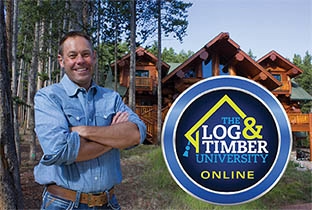
There are cheaper ways to heat a log home than a fireplace but none more romantic. Sipping wine in front of a forced-air vent doesn’t evoke passion. Likewise, radiant-floor heating emphasizes comfort but misses sentimental feelings. Part of the image of living in a log home includes a crackling fire and the warm glow of its flame reflecting off the log walls and ceiling beams.
The fireplace is a beautifully visible part of the home. As such, it plays an important role in how we enjoy our log home. The fireplace reflects the heart and soul of its owners, and can turn a plain room into an inviting retreat. One of the most exciting characteristics of a fireplace is its role as a design focal point, bringing together furniture, artwork, lamps and draperies in a pleasingly harmonious decor within a room.
Small wonder, then, that log home buyers specify a fireplace as their most sought-after amenity when planning the home’s interior. Fireplaces are so in demand, in fact, that you can hardly consider one an extra. They take on many forms, both in appearance and operation.
Like so much else about log homes, the choice of fireplace — its look, its materials, its accessories — is up to you. Here is a roundup of common, and a few uncommon, log home fireplace styles.











